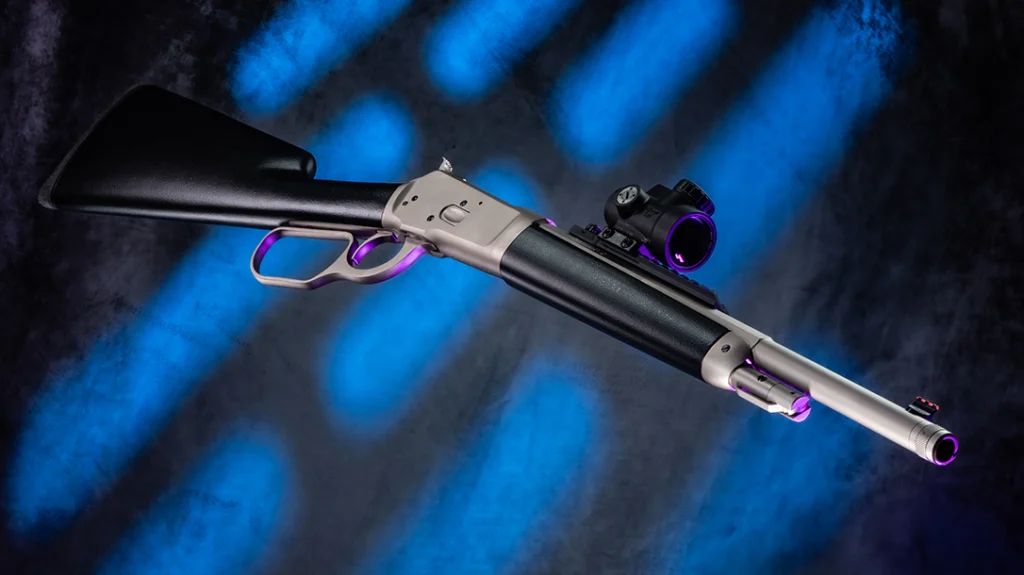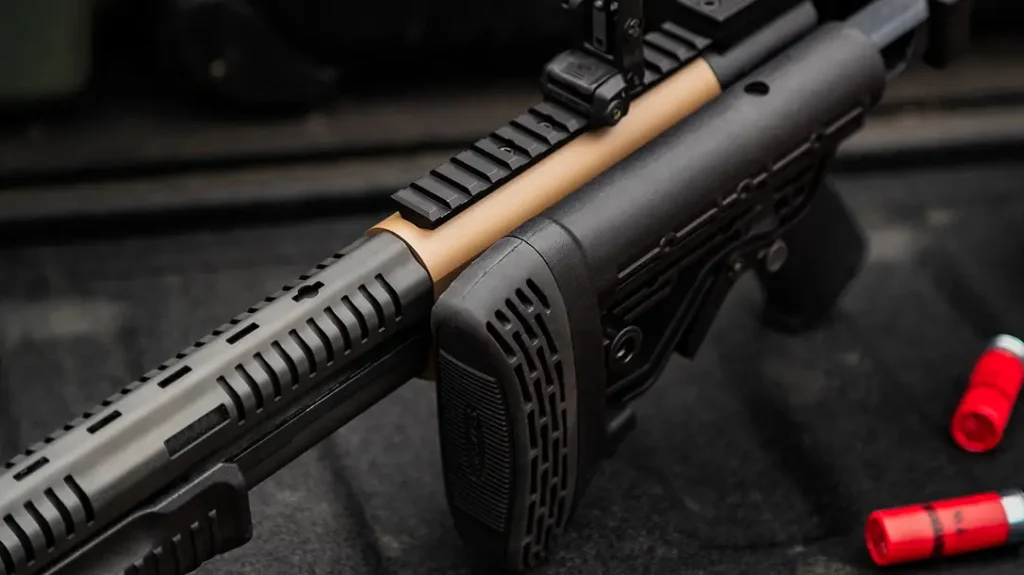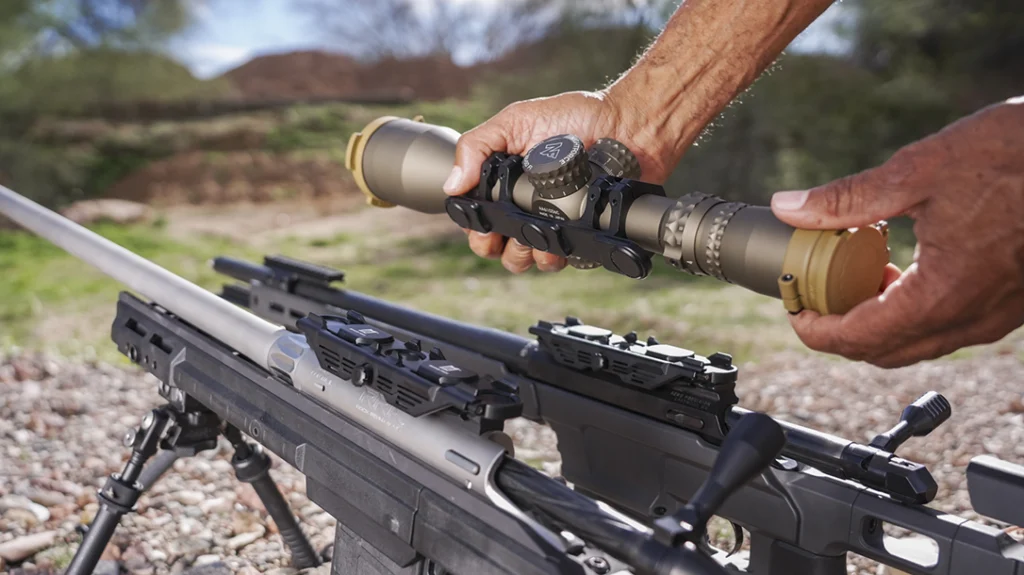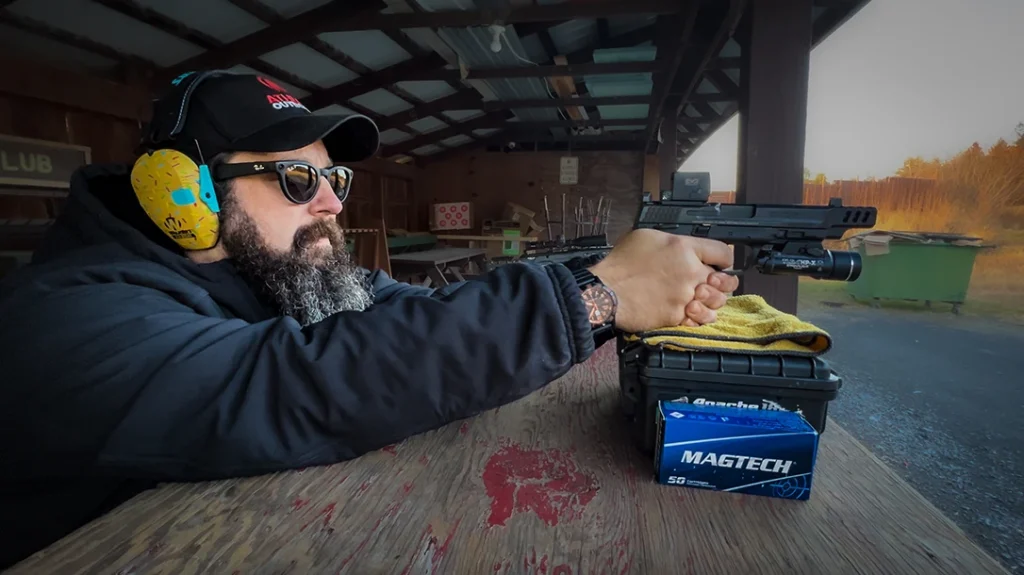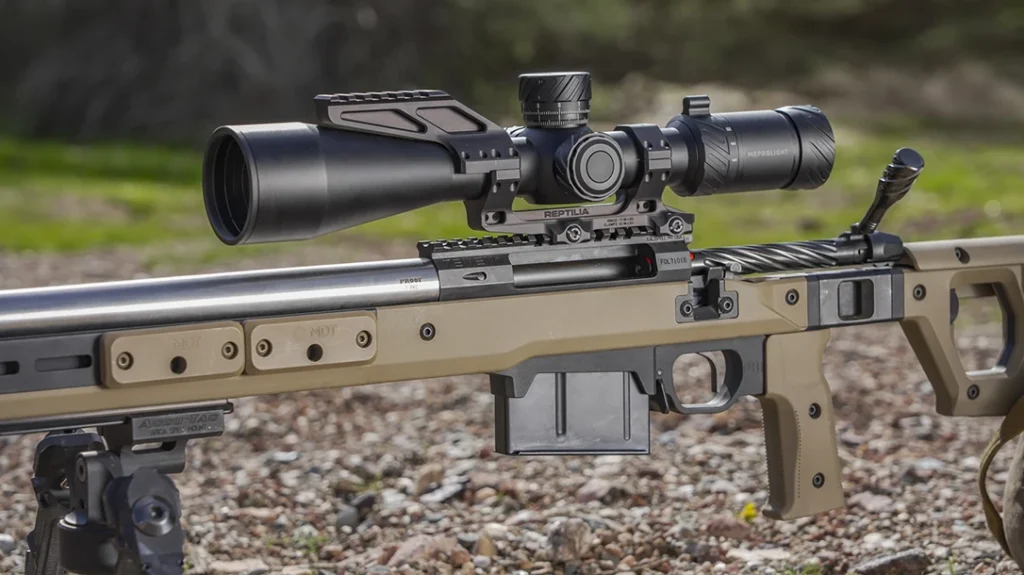“Feed the pig!” I’ve been through plenty of shotgun courses, have taught many myself, and that expression comes up every time. The shotgun is an incredibly capable firearm, but it runs out of ammo quickly. Most shotguns will hold between 4-8 rounds, and with modern semi-automatic firearms capable of .15-second splits and faster, the shotgun runs out ammunition faster than ever. Unlike an AR-15 or pistol that requires aligning a preloaded magazine into a single magazine well, your typical shotgun reload requires grabbing awkwardly shaped shells and inserting them into a magazine tube consistently. If there is something that directly contributes to your ability to feed the pig efficiently, it is quality shotgun ammo management that works with your reloading style. What follows is an assessment of common management methods and accessories for your shotgun.
Shooting 101: Shotgun Ammo Management
On the Gun Options
Elastic Shotgun Shell Cards
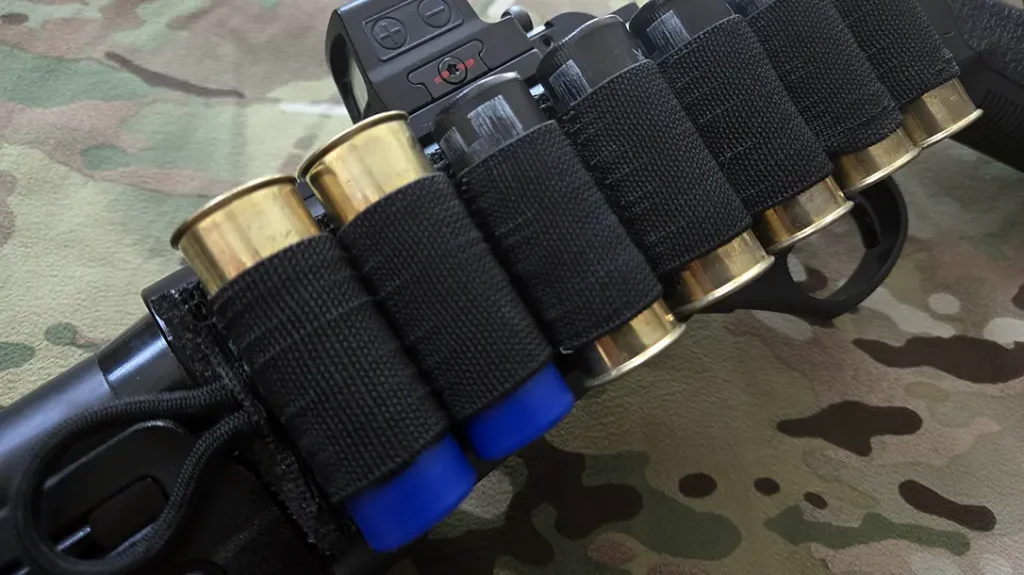
These hard, nylon cards with elastic shotgun shell loops and Velcro backs are available in various sizes from four to seven rounds. Using a strong adhesive, one side of the hook and loop is mounted directly to the left-hand side of the shotgun receiver. What makes these a great management device is the fact ammo is carried on the shotgun and you won’t leave it behind. Since the shells are on the receiver, the firearm balance is hardly affected. Additionally, you can position your shells brass up or brass down, depending on your reloading style. When one shotgun card is expended, rip it off and slap on another.
Advertisement — Continue Reading Below
One word of warning, if you have a pump shotgun forend that covers part of the receiver when racked, you will need to replace it or order a lower-capacity shotgun shell card to mount further back. Receiver-mounted shell holders have essentially replaced the buttstock (butt cuff or integrated into the stock) mounted variety since reaching back and between the stock and arm is not as efficient as grabbing shells opposite the ejection port.
Hard Sided Side-Saddles
Mounted to the left of the receiver, these hard sided side saddles have rigid shotgun shell loops. Some hold the shells upright while others are available with canted forward shell loops. These work extremely well and do not lose their grip on the shells like their soft-sided counterpart previously mentioned. Drawbacks to these are their weight and the bulk added to the firearm even when the extra shells are not inserted. While some designs are budget friendly, some are precision machined for a professional look, albeit more costly.
On the Body Options
Belt-Mounted Holders
Spare shells can be carried horizontally and vertically on the belt in any number of dedicated holders. These can vary in capacity from simple Kydex clip-on, two-shot holders ideal for rapid select-slug use all the way up to 28-round competition-style holders for speed quad reloading. Drawing heavily from the competition world, belt-mounted holders place ammo close to the body where weight is carried easily and where humans are strongest at their core. It is questionable if you will have time to grab a duty belt loaded with shotgun shells, but if a scenario allows, it is a proven method of holding rounds securely, removing the weight from the firearm to allow it to move freely.
Advertisement — Continue Reading Below
Tactical Vests
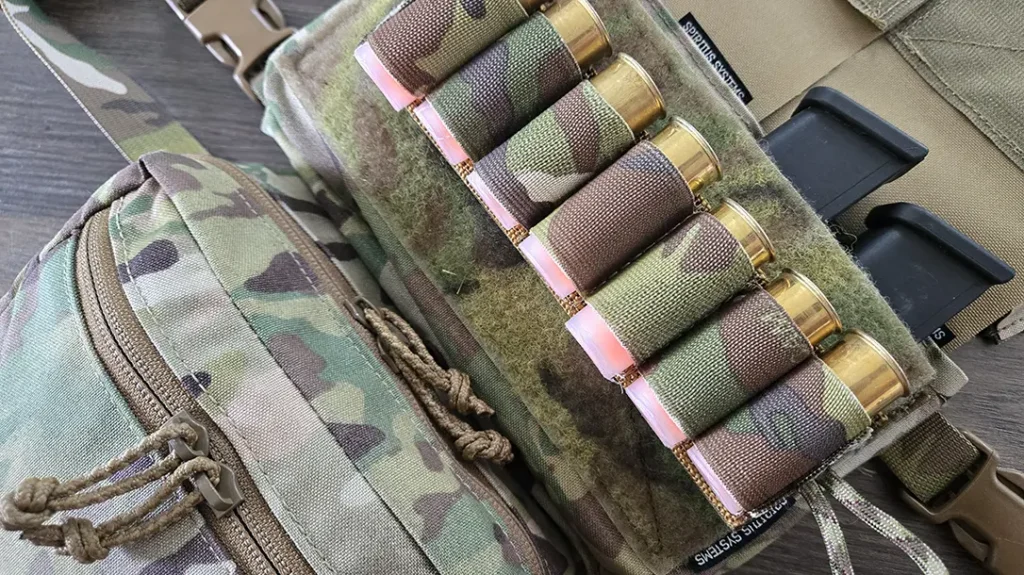
Similar to the belt option, a dedicated vest separates the spare ammunition from the firearm. A vest gives the user the ability to carry the most ammunition possible with multiple elastic loops and pockets for additional accessories like batteries for weapon lights, med gear, multi-tool, and more. The real estate on a vest can be configured to prioritize slugs in one location and spare buckshot in another. The downside to a vest is the overt nature of it. When it is on, it is hard to conceal save for a trenchcoat. The modular nature of some vests can streamline its appearance and remove bulk and excess features that aren’t needed for basic reloading needs.
Bandoleer and Dedicated Leather Shell Belt
Found at every gun show across the nation is the ubiquitous 25-50-round bandoleer and leather shell belt. These are more for storing spare ammunition than they are for wearing as both will load you down. Since they are not firmly secured to the body, they can rotate around and when you reach for a shell; you may find an empty loop instead. What these lack in performance, they make up for in 80’s movie cool factor.
Advertisement — Continue Reading Below
Loose Rounds In a Pocket/Pouch
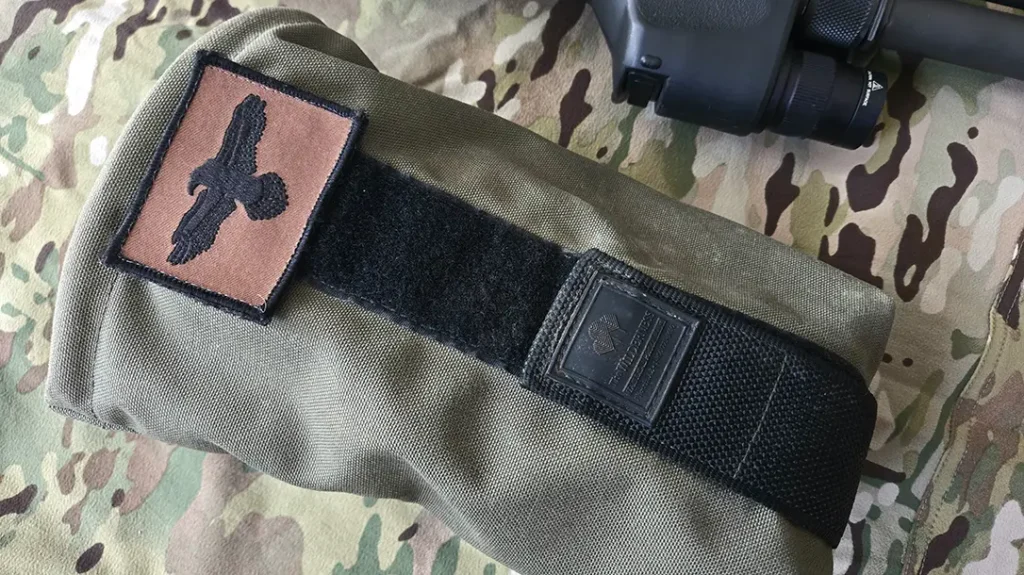
For all the great options, there have to be a couple that simply are not optimal. One of the most inconsistent ways to manage spare shells is loose in a pocket. While competition shooters will open a box of target ammo and dump it into a pouch before entering a clays course, they also don’t run or move about in a way that would deposit all of those shells on the deck. The demands of trap and skeet shooting are different than those of a person relying on a shotgun for defense. Unsecured shotgun shells never are in the same position twice, making it difficult to gain a consistent purchase on them. Furthermore, there are only so many shells that will fit in the hand-warmer pockets of your jeans.
Another sub-optimal way of carrying ammunition is on a sling with elastic loops for shells. The ire for this method is from the consequence of having heavy rounds swinging about on your sling, affecting your ability to create a steady precision shot with slugs. Perhaps the only way around this is to firmly snug your sling to the shotgun creating a quasi side-saddle or removing the sling entirely and using a dedicated side-saddle instead.
Regardless of what option you use for feeding your pig, training is what will determine your level of success. At the end of the day, the only standard is success, and no matter what option you select for shotgun ammo management, practice with it. Training is the way.
Advertisement — Continue Reading Below
Find a place to shoot at NSSF.org.


